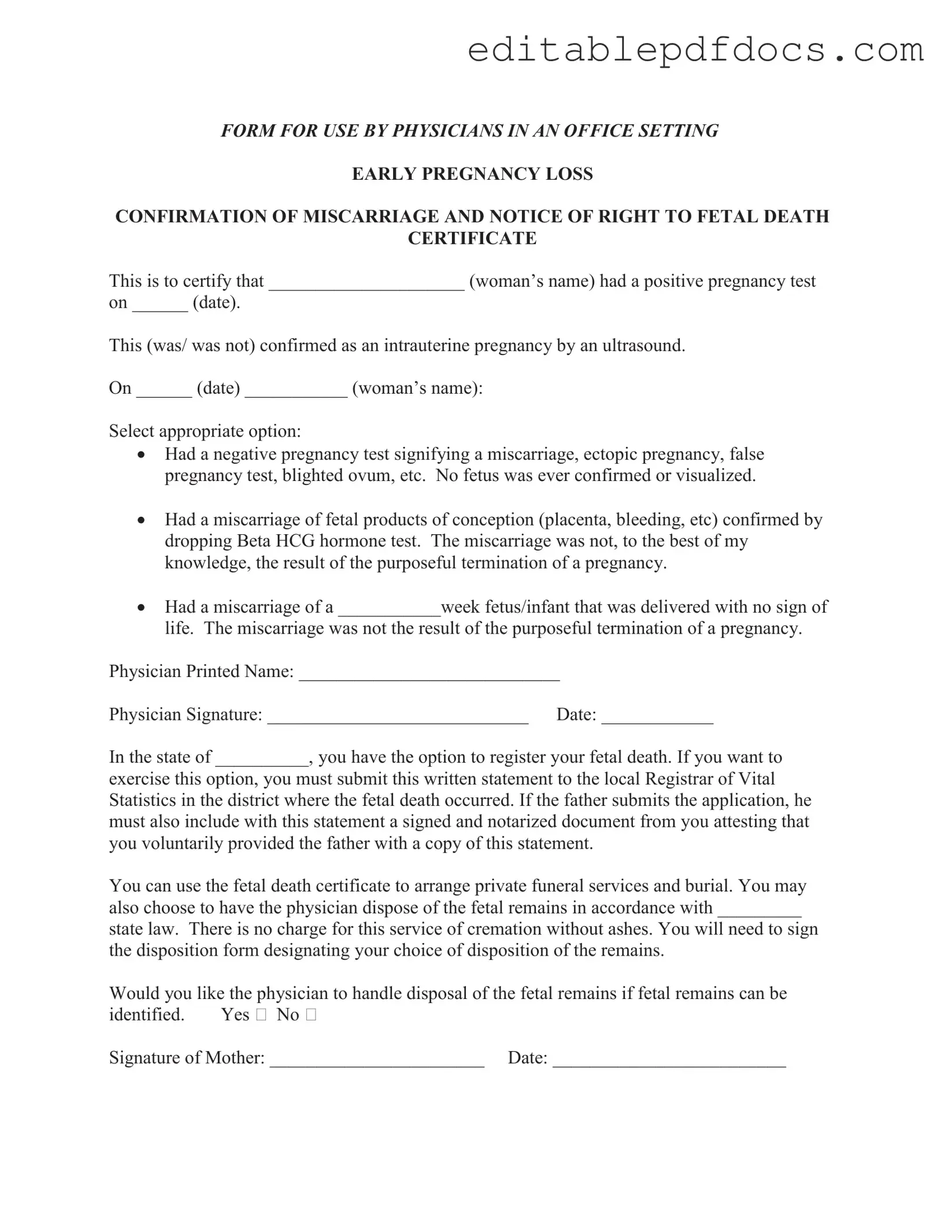The Miscarriage Discharge Paper form plays a crucial role in documenting early pregnancy loss and providing necessary information to those affected. This form is designed for use by physicians in an office setting and serves multiple purposes. It confirms the occurrence of a miscarriage and outlines the patient's options regarding fetal death registration. The form begins with essential details, including the woman's name and the date of her positive pregnancy test, followed by confirmation of whether the pregnancy was intrauterine. It allows physicians to specify the nature of the miscarriage, whether it was due to a negative pregnancy test, a confirmed miscarriage, or the delivery of a non-viable fetus. Additionally, the form informs the mother of her rights to register the fetal death and the steps required to do so. It also provides options for the disposition of fetal remains, whether through private funeral services or physician-assisted disposal, ensuring that families can make informed choices during a difficult time. The document concludes with a section for the mother's signature, affirming her understanding and consent regarding the options presented. This form not only serves as a legal document but also provides emotional support by guiding families through their choices following a loss.
